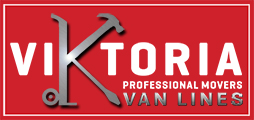So often in the build up to moving we overlook the aspects most taken for granted, sometimes even deciding to ignore them. A perfect example is moving insurance. I moved four times and started to develop a system for myself. I spend weeks strategically packing things away (room-by-room), checking lists and colour-coding boxes, double checking vehicle availability to make sure the truck arrives on time, and triple checking things at my new abode.
Moving insurance was never high on my list of priorities, and for a few good reasons: it’s an extra expense; my Toronto moving company is insured; and, what are the chances anyway? Much like buying travel insurance when booking your flights for a vacation overseas, moving insurance seemed like an unnecessary expense.
The importance of getting proper moving insurance became apparent when an unexpected mishap caused damage to a family heirloom (a large living room mirror my grandmother bought in the 1950s) while in transit – and that was my lesson learned. I looked into the subject area and discovered some interesting facts below that I recommend keeping in mind.
- Many Toronto moving companies offer what’s known as “Valuation Coverage” (“Homeowner Insurance” only offers limited coverage on items in transit)
- DIY packing can make your coverage void since packing errors may be yours
- Moving Insurance policies offer the most complete protection
So, what does this mean? And what options are available to you if you want to play it safe and maximize protection of your things while moving. Well, here’s what I found out.
What is Valuation Coverage?
Whether offering local or international residential moving services, your chosen Toronto moving company is obliged to be insured. But Valuation Coverage essentially means they provide a predetermined limit of liability based on the perceived value of the loan being transported, and is detailed in your contract via your Bill of Lading. There are 3 ways that this limit of liability is calculated:
- Declared Value Protection – This is calculated by offering a specific money value per pound. So, let’s say the total weight of your possessions loaded on the truck is 10,000 lbs, and a rate of $6-$8/lb is set (a common standard), the moving company in Toronto is liable to a maximum coverage of $60,000-$80,000 in the event of any incident. The problem is that this coverage does not necessarily reflect the actual value of the items in transit, so an item that is light but expensive is covered to the same degree as a $5 paperweight.
- Assessed Value Protection – You can get around the light-but-valuable issue by purchasing coverage based on the value of the load being transported. It’s usually available at a per-$1,000 rate, so you will pay a premium of $5-$10 for every $1,000 of value, with a range of deductibles. It is vital that the agreement is stated in the Bill of Lading, otherwise your Toronto moving company is under no obligation to honour it.
- Complete Value Protection – This is clearly the best of the three options, but also the least common to find. Many Toronto moving companies agrees liability to the full value of your possessions in transit, whether it is lost, damaged or completely destroyed, and even covers the cost of repairs or replacement. However, there are usually catches to the coverage too, so while a premium rate of $5 per $1,000 value on possessions with a combined value of $50,000 means paying an extra $250, minimum coverage limits and a range of deductibles.
All of the above means that you should fully understand the conditions and scope of coverage before signing any contract with Toronto moving company.
What Does Homeowner Insurance Cover?
The quick answer to this question is: not much. It depends on your insurance company and the terms of the home insurance policy you have. The best thing to do, therefore, is to call your insurance company and ask them.
In many cases, there is no coverage for possessions while in transit, though there is 30-days coverage provided once they arrive in your new home. In some coverage is provided at only a very small percentage – perhaps as small as 10%.
Moving Insurance Policies Worth Considering
If you are not satisfied with your moving company’s Valuation Coverage, and discover that your Homeowner Insurance policy offers completely inadequate protection then buying moving insurance may be the best thing to do.
But there are several issues to consider in that case too:
- Protected when loading the truck
- Protected during transit
- Protected when unloading the truck
Most Toronto moving companies are more than happy to sell you additional insurance. It’s always a good idea to consult your insurance broker separately to get a good overall assessment of the options on offer.
For the most part, the types of coverage that Toronto moving companies offer should be enough, but the Canadian Association of Movers (CAM) recommends that you check out the details of the coverage offered. CAM produced a brief overview on the matter, which is worth reading.
About Viktoria Van Lines Toronto
Viktoria Van Lines Toronto is a professional Toronto moving and storage company, providing high quality local and long distance moving services throughout the GTA, Southern Ontario and across Canada. Thanks to our country-wide network we are also able to service our clients’ long distance moving needs throughout Canada.
Call Viktoria Van Lines Toronto (647) 344-1554 or Toll Free: 1 ( 877) 399-1315 for a FREE Consultation in regards to your residential or commercial / office moving needs to and from Toronto, the GTA and across Canada.
